In-Seok Song
Attend-and-Refine: Interactive keypoint estimation and quantitative cervical vertebrae analysis for bone age assessment
Jul 10, 2025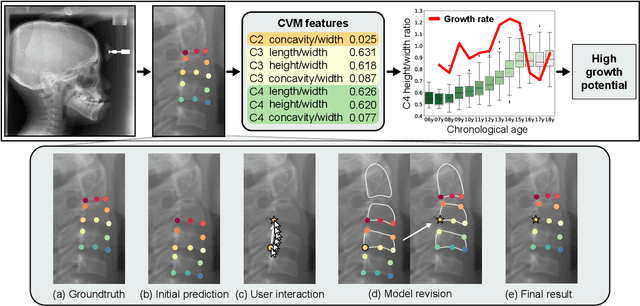
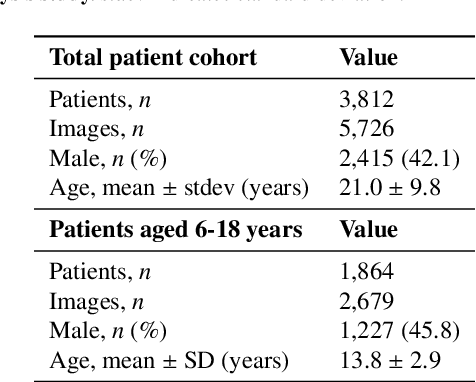
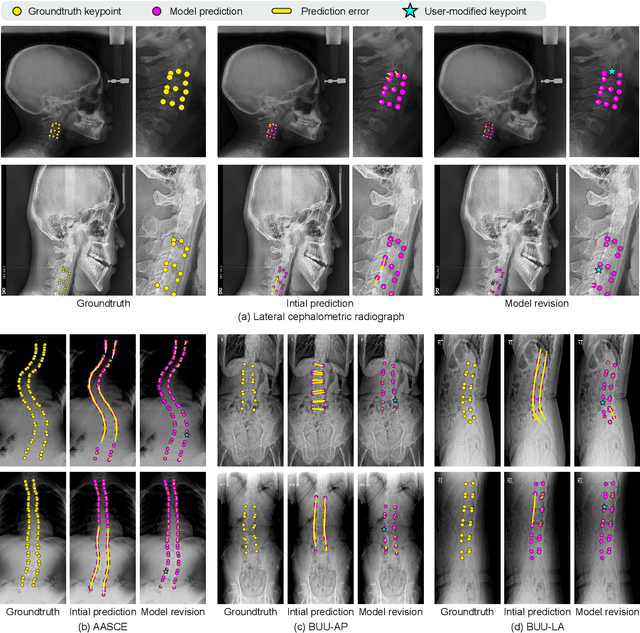
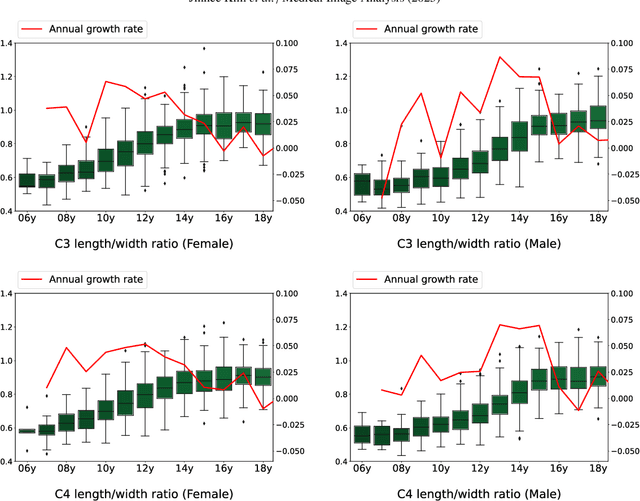
Abstract:In pediatric orthodontics, accurate estimation of growth potential is essential for developing effective treatment strategies. Our research aims to predict this potential by identifying the growth peak and analyzing cervical vertebra morphology solely through lateral cephalometric radiographs. We accomplish this by comprehensively analyzing cervical vertebral maturation (CVM) features from these radiographs. This methodology provides clinicians with a reliable and efficient tool to determine the optimal timings for orthodontic interventions, ultimately enhancing patient outcomes. A crucial aspect of this approach is the meticulous annotation of keypoints on the cervical vertebrae, a task often challenged by its labor-intensive nature. To mitigate this, we introduce Attend-and-Refine Network (ARNet), a user-interactive, deep learning-based model designed to streamline the annotation process. ARNet features Interaction-guided recalibration network, which adaptively recalibrates image features in response to user feedback, coupled with a morphology-aware loss function that preserves the structural consistency of keypoints. This novel approach substantially reduces manual effort in keypoint identification, thereby enhancing the efficiency and accuracy of the process. Extensively validated across various datasets, ARNet demonstrates remarkable performance and exhibits wide-ranging applicability in medical imaging. In conclusion, our research offers an effective AI-assisted diagnostic tool for assessing growth potential in pediatric orthodontics, marking a significant advancement in the field.
3D Teeth Reconstruction from Panoramic Radiographs using Neural Implicit Functions
Nov 28, 2023Abstract:Panoramic radiography is a widely used imaging modality in dental practice and research. However, it only provides flattened 2D images, which limits the detailed assessment of dental structures. In this paper, we propose Occudent, a framework for 3D teeth reconstruction from panoramic radiographs using neural implicit functions, which, to the best of our knowledge, is the first work to do so. For a given point in 3D space, the implicit function estimates whether the point is occupied by a tooth, and thus implicitly determines the boundaries of 3D tooth shapes. Firstly, Occudent applies multi-label segmentation to the input panoramic radiograph. Next, tooth shape embeddings as well as tooth class embeddings are generated from the segmentation outputs, which are fed to the reconstruction network. A novel module called Conditional eXcitation (CX) is proposed in order to effectively incorporate the combined shape and class embeddings into the implicit function. The performance of Occudent is evaluated using both quantitative and qualitative measures. Importantly, Occudent is trained and validated with actual panoramic radiographs as input, distinct from recent works which used synthesized images. Experiments demonstrate the superiority of Occudent over state-of-the-art methods.
Morphology-Aware Interactive Keypoint Estimation
Sep 15, 2022

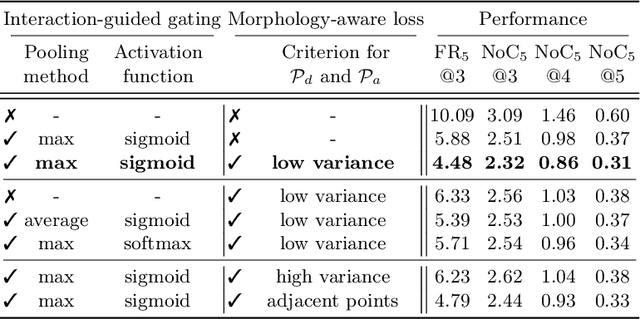

Abstract:Diagnosis based on medical images, such as X-ray images, often involves manual annotation of anatomical keypoints. However, this process involves significant human efforts and can thus be a bottleneck in the diagnostic process. To fully automate this procedure, deep-learning-based methods have been widely proposed and have achieved high performance in detecting keypoints in medical images. However, these methods still have clinical limitations: accuracy cannot be guaranteed for all cases, and it is necessary for doctors to double-check all predictions of models. In response, we propose a novel deep neural network that, given an X-ray image, automatically detects and refines the anatomical keypoints through a user-interactive system in which doctors can fix mispredicted keypoints with fewer clicks than needed during manual revision. Using our own collected data and the publicly available AASCE dataset, we demonstrate the effectiveness of the proposed method in reducing the annotation costs via extensive quantitative and qualitative results. A demo video of our approach is available on our project webpage.
 Add to Chrome
Add to Chrome Add to Firefox
Add to Firefox Add to Edge
Add to Edge